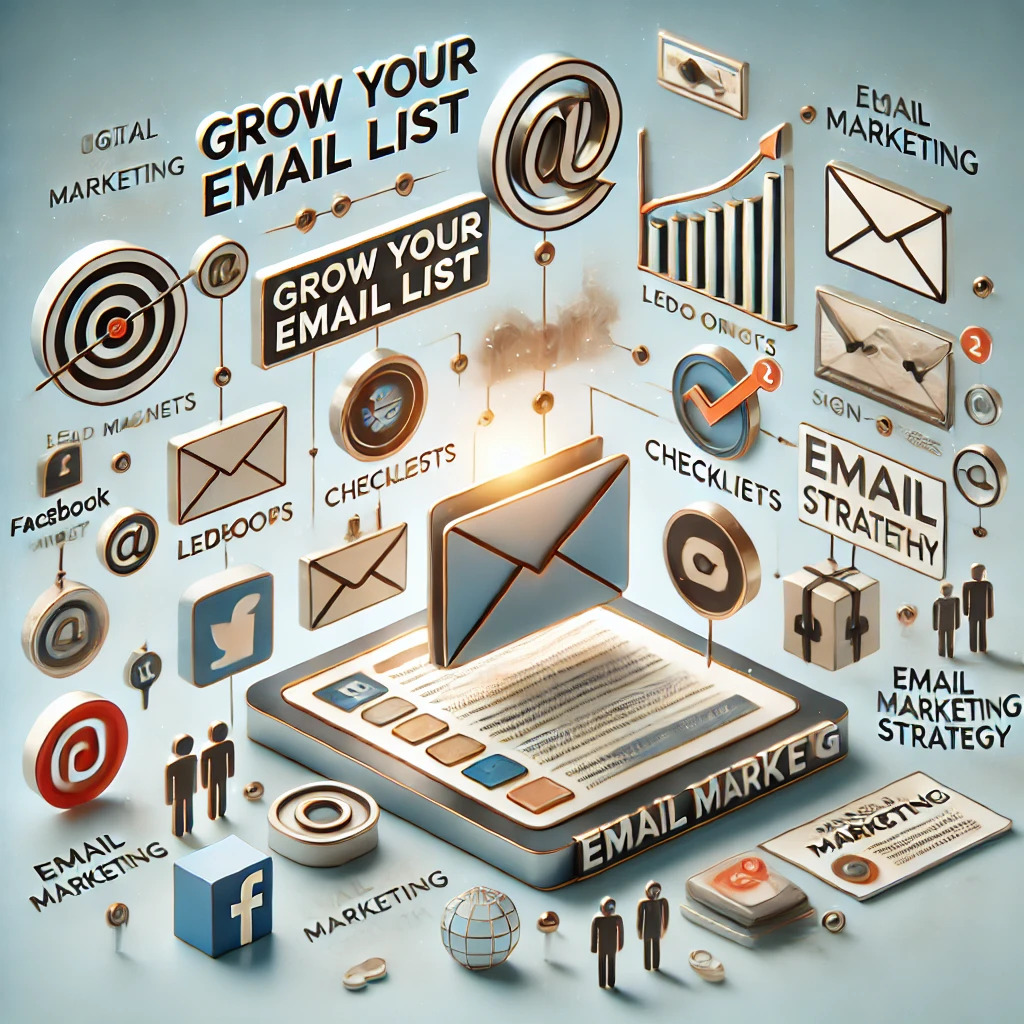Growing an email subscriber list is a fundamental strategy for businesses looking to build strong, ongoing relationships with their audience. However, building an engaged email list goes beyond simply collecting email addresses—it requires a strategic approach to attract, convert, and retain subscribers. In this article, we’ll explore three proven strategies for growing your email list: offering irresistible lead magnets, optimizing your sign-up forms for maximum conversions, and leveraging social media and other channels to drive sign-ups. These strategies, when implemented effectively, can help you build a high-quality, engaged email list that drives your business forward.
Offering Irresistible Lead Magnets to Attract Subscribers

One of the most effective ways to grow your email subscriber list is by offering valuable lead magnets. Lead magnets are free resources or incentives given in exchange for a visitor’s contact information, usually their email address. The goal is to offer something that addresses your audience’s needs or desires, making them willing to exchange their email for access to the resource. A well-crafted lead magnet can be a game-changer for building an engaged email subscriber list. Here’s how you can create and use lead magnets to attract more subscribers.
Creating Valuable Lead Magnets: eBooks, Checklists, and Free Trials
The type of lead magnet you offer should provide real value to your audience and directly support the growth of your email subscriber list. One popular form is eBooks, which allow you to dive deep into a particular topic. An eBook should provide insightful, actionable content that your target audience finds informative or solves a problem. For example, a digital marketing company might offer an eBook on “10 Proven Strategies for Social Media Marketing,” helping boost their email subscriber list with highly relevant contacts.
Another effective lead magnet is a checklist. People love checklists because they break down complex tasks into easy, actionable steps. For instance, a personal finance website might create a “Debt Repayment Checklist” to guide users through financial planning, which in turn helps grow their email subscriber list.
Offering a free trial or demo is another popular strategy, especially for software and service-based businesses. Free trials give users a taste of what your product or service offers without any initial commitment. This approach often leads to valuable additions to your email subscriber list, as interested users opt in for further updates and benefits.
The key to creating an irresistible lead magnet is ensuring it’s valuable enough to warrant the exchange of an email address. It should be something that will benefit your target audience and significantly contribute to your email subscriber list.
Aligning Your Lead Magnet with Your Audience’s Needs
For a lead magnet to be effective, it must align with your audience’s interests and needs. If it doesn’t address a specific pain point or provide a solution to a problem, subscribers may not find it valuable enough to sign up. Therefore, understanding your audience is critical to building a quality email subscriber list.
Start by researching the common challenges, questions, or interests of your target audience. If you run a fitness business, for example, offering a “7-Day Healthy Meal Plan” as a lead magnet could appeal to those interested in getting fit but unsure where to start. This would encourage them to join your email subscriber list. On the other hand, a business-focused blog could offer a “Business Planning Template” that helps entrepreneurs organize their goals, further supporting the growth of your email subscriber list.
The more tailored your lead magnet is to your audience’s unique needs, the more likely it will be that they’ll exchange their email for it, contributing to a strong email subscriber list.
Examples of Successful Lead Magnets
Many businesses have successfully used lead magnets to grow their email subscriber list. For example, HubSpot, a marketing platform, offers free templates, eBooks, and guides on topics like email marketing and inbound strategies, which have helped them grow their email subscriber list significantly. Neil Patel, a digital marketing expert, offers a free SEO audit tool as a lead magnet, attracting businesses looking to improve their online visibility and join his email subscriber list.
Other examples include Shopify, which offers a 14-day free trial to entice potential users, and Moz, which offers a free beginner’s guide to SEO. These lead magnets not only encourage sign-ups but also offer significant value to the user, resulting in a high conversion rate and an ever-expanding email subscriber list.
In conclusion, offering valuable lead magnets tailored to your audience’s needs is a proven strategy for growing your email subscriber list. Whether you choose eBooks, checklists, or free trials, ensuring the content addresses a specific pain point will make your lead magnet irresistible to potential subscribers. With the right strategy, you can turn your lead magnets into powerful tools for building a quality email subscriber list.



